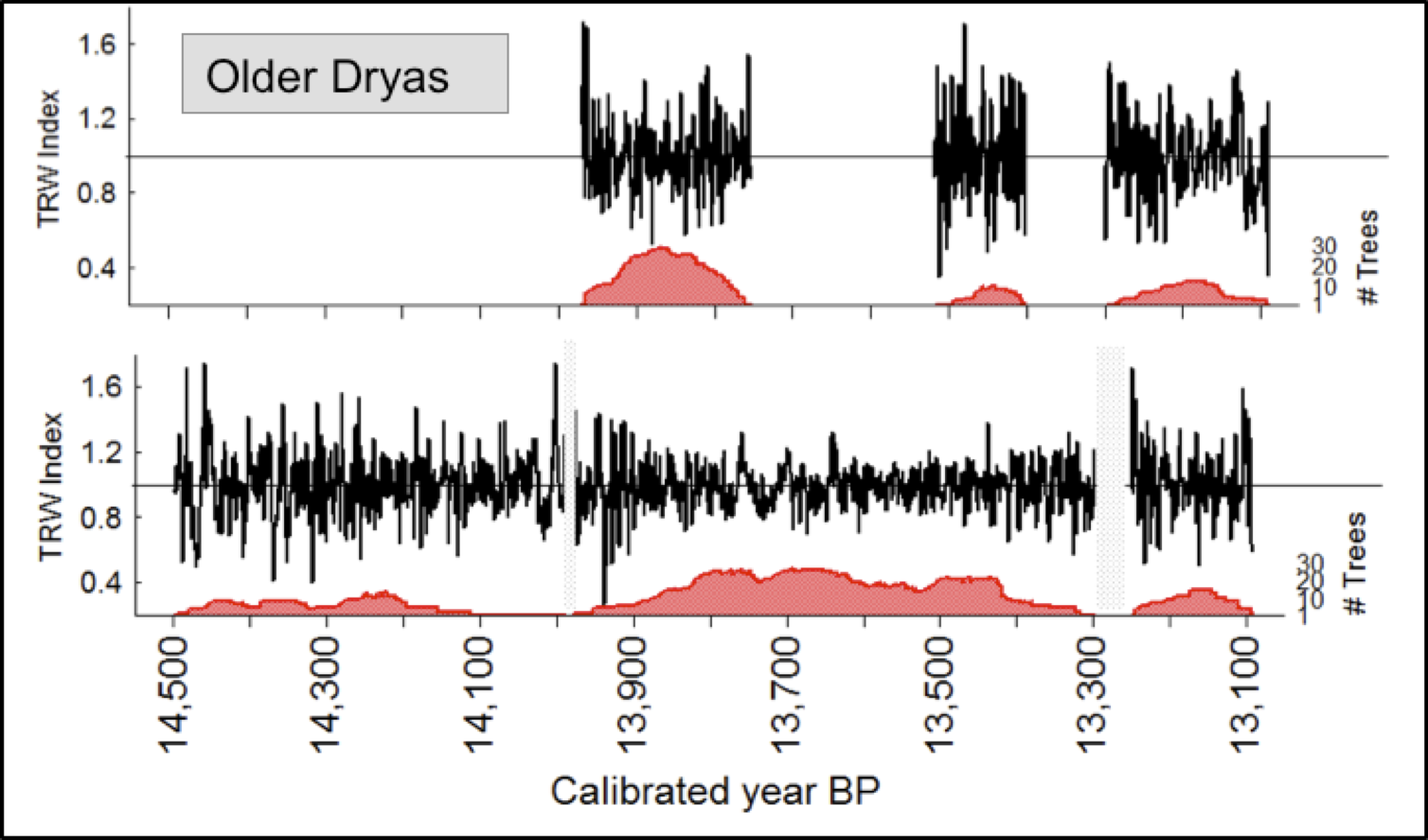
A alliance of geologists, dendrochronologists, botanists and ecologists have been searching for ancient forest-bed exposures across the Midwest, scouting for mining pit operations, scavenging exposures along river banks, diving into cold and dark waters of Lake Huron, and breaking ground in farm fields, all to collect buried ancient wood that has not seen daylight for the last 10-15 thousand years. The main goal of this effort has been to develop a tree-ring chronology of Older Dryas (or Two Creekan) and Younger Dryas time that covers abrupt climatic changes in the transition from the last glacial to the present interglacial period that we live in.
After extensive field campaigns, the effort to collect Late-Glacial wood has resulted in crossdating and overlapping three main tree-ring records from 13 sites. These Older Dryas tree-ring records are unprecedented for the Great Lakes Late Glacial period, and they overlap between 14.5ka and 13ka. The construction of a network of Great Lakes Subfossil Tree Rings (GLSTR) indicates that preservation of trees from Late Glacial time in mid-America may not be as rare as one might think. It could be that Late Glacial wood is no rarer than the surprisingly frequent occurrence of mastodon or mammoth bones scattered across the Midwest. Additional systematic collection efforts are greatly needed to increase replication of tree-ring series in the chronologies.
